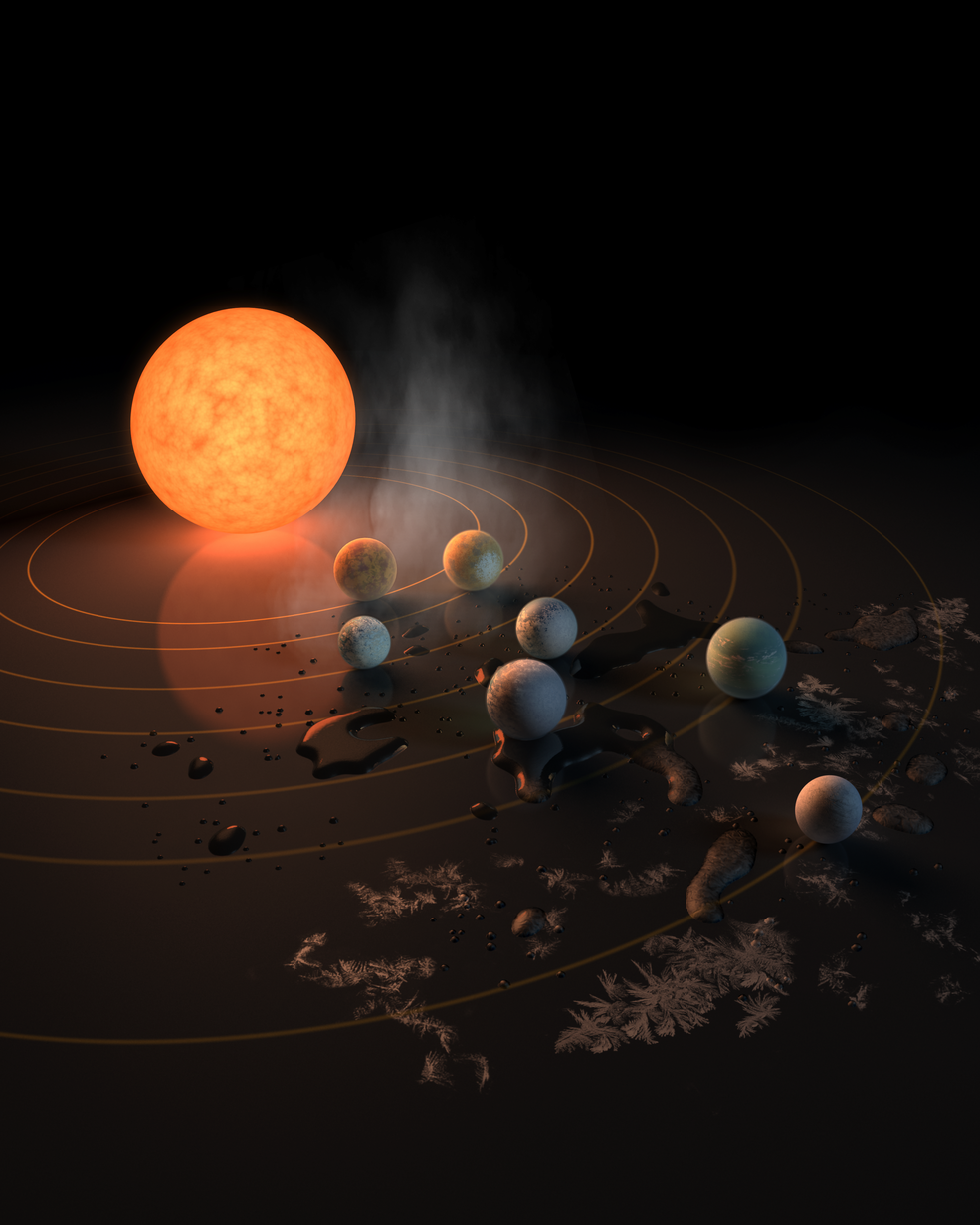 Image credit: NASA and JPL/Caltech
Image credit: NASA and JPL/Caltech
(NASA) This month marks the third anniversary of the discovery of a remarkable system of seven planets known as TRAPPIST-1. These seven rocky, Earth-size worlds orbit an ultra-cool star 39 light-years from Earth. Three of those planets are in the habitable zone, meaning they are at the right orbital distance to be warm enough for liquid water to exist on their surfaces. After its 2021 launch, NASA’s James Webb Space Telescope will observe those worlds with the goal of making the first detailed near-infrared study of the atmosphere of a habitable-zone planet.
Video: An Introduction to the James Webb Space Telescope Mission:
To find signs of an atmosphere, astronomers will use a technique called transmission spectroscopy. They observe the host star while the planet is crossing the face of the star, known as a transit. The light of the star filters through the planet’s atmosphere, which absorbs some of the starlight and leaves telltale fingerprints in the star’s spectrum.
Finding an atmosphere around a rocky exoplanet — the word scientists use for planets beyond our solar system — won’t be easy. Their atmospheres are more compact than those of gas giants, while their smaller size means they intercept less of the star’s light. TRAPPIST-1 is one of the best available targets for Webb since the star itself is also quite small, meaning the planets’ size relative to the star is larger.
“The atmospheres are harder to detect but the reward is higher. It would be very exciting to make the first detection of an atmosphere on an Earth-sized planet,” said David Lafrenière of the University of Montreal, principal investigator on one of the teams examining TRAPPIST-1.
Red dwarf stars like TRAPPIST-1 tend to have violent outbursts that could make the TRAPPIST-1 planets inhospitable. But determining whether they have atmospheres, and if so, what they're made of, is the next step to finding out whether life as we know it could survive on these distant worlds.
More info: https://www.nasa.gov/feature/goddard/2020/nasa-s-webb-will-seek-atmospheres-around-potentially-habitable-exoplanets
Reference
https://www.youtube.com/watch?v=YF22Ba-xrk8 (above video)
